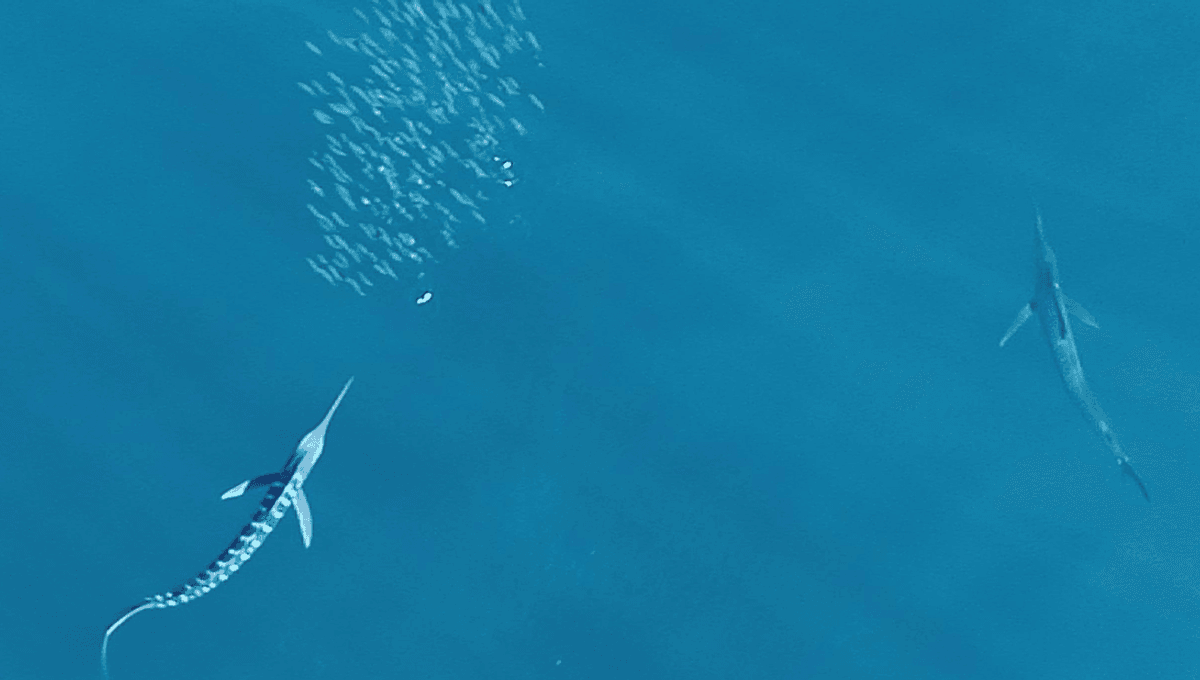
Marlin and sailfish are some of the oceans’ top predators and some of the fastest fish on the planet. Marlin have been known to hunt in groups, taking it in turns to stun and then snatch sardines from the middle of a school. Now, using new drone technology, researchers have revealed a surprising insight into how these fish coordinate their attacks without injuring each other, and it’s all to do with color.
Striped marlin (Kajikia audax) have been known to change color, but the drone footage revealed to the team that attacking marlin became much brighter in the stripes along their bodies before they attacked, and then returned to the pre-hunting color after striking.
Marlin possess long, elongated rostrums or snouts that can be used to help stun and catch their prey, but also can injure other animals in the tropical waters of the Pacific and Indian Oceans. They can measure 4 meters long (14 feet) and weigh around 113-204 kilograms (250-450 pounds), according to NOAA.
“We documented for the first time rapid color change in a group-hunting predator, the striped marlin, as groups of marlin hunted schools of sardines,” says Alicia Burns of Humboldt University in Berlin, Germany in a statement.
The researchers analyzed 12 video clips of marlin hunting Pacific sardines (Sardinops sagax) in this way. Two different marlin were present in each clip to allow the researchers to compare the colors between the two.
“We found that the attacking marlin ‘lit up’ and became much brighter than its groupmates as it made its attack before rapidly returning to its ‘non-bright’ coloration after its attack ended,” continued Burns.
The team think this change in the brightness of the stripes acts as a signal to the non-attacking fish to warn them what is about to happen, thereby deterring them from attacking as well and potentially getting injured. It’s similar to the way tiny medaka fish also change to a darker color before attacking other fish within the same tank.
“Color change in predators is rare, but especially so in group-hunting predators,” Burns said. “Although it is known that marlin can change color, this is the first time it’s been linked to hunting or any social behavior.”
The team plan to investigate whether the marlin change color when hunting alone, or if they change the brightness of their stripes in any other social context. They also plan to see if other fish with color-changing abilities use their stripes in the same way.
The study is published in Current Biology.
Source Link: Watch One Of The World's Fastest Fish Change Color Before Going In For The Kill